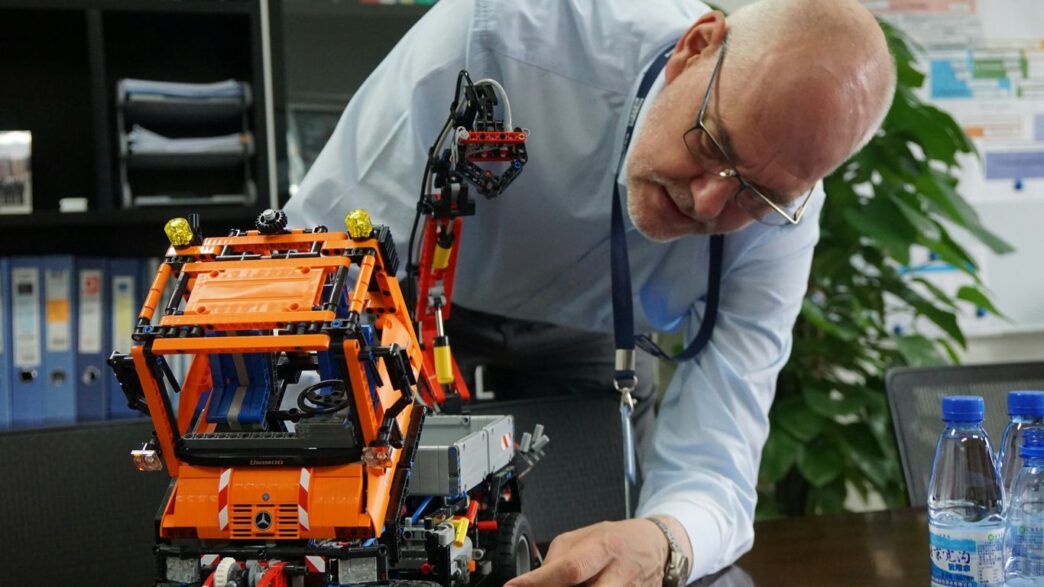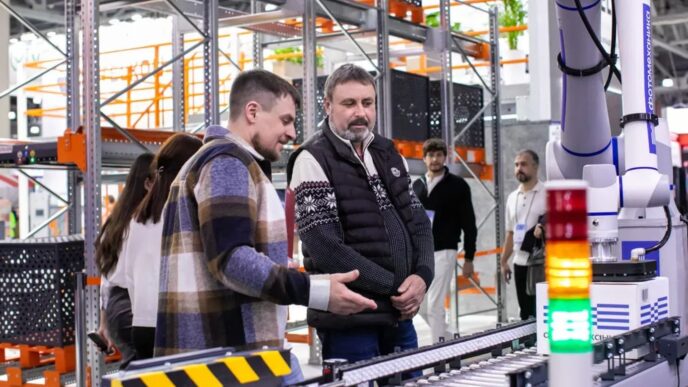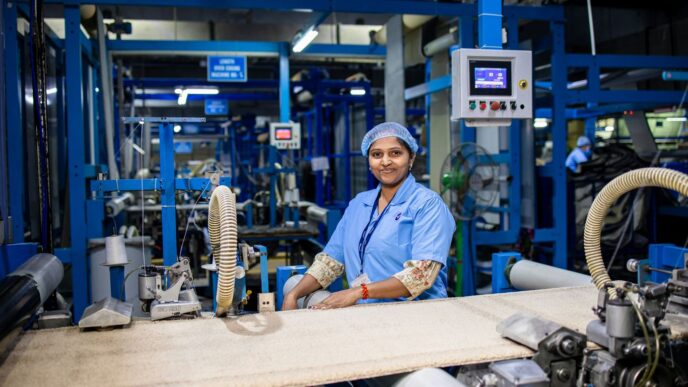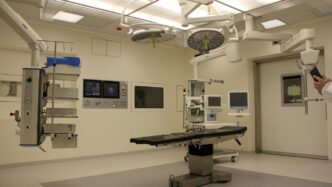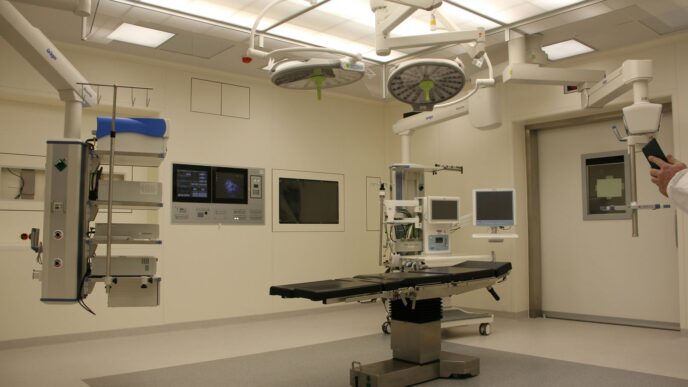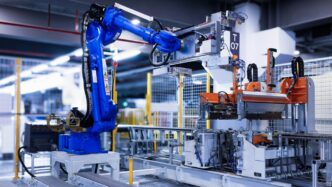Robotics Engineer

So, you’re thinking about a career in robotics? Awesome! The "Robotics Engineer" title is kind of the main event, the generalist role that gets a lot of the action. Basically, if you’re a robotics engineer, you’re the person who figures out how to design, build, and then keep robots running. It’s not just about making them move; it’s about making them do useful stuff.
Think about it – robots are popping up everywhere these days. You’ve got them on assembly lines in factories, helping out in hospitals, and even flying through space. Each of these applications needs a robotics engineer to make it happen. You’ll be working with a bunch of different things, from the nuts and bolts of the machine to the code that tells it what to do. It’s a job that really requires you to be good at a lot of different things.
What kind of skills are we talking about? Well, you’ll definitely need to know your way around:
- Mechanical stuff: How to design the physical parts, like the arms, legs, or chassis.
- Electrical bits: Understanding sensors, motors, and how to power everything up.
- Programming: Writing the code, often in languages like Python or C++, to make the robot actually do something.
- Problem-solving: Because let’s be real, things rarely work perfectly the first time. You’ll be troubleshooting a lot.
It’s a field that’s always changing, so being ready to learn new things is pretty important too. You might be sketching out designs one day and then debugging code the next. It’s a hands-on role, and you get to see your creations come to life.
Robotics Systems Engineer
So, you’ve got a robot, or you’re building one. Great! But how does it actually work with everything else? That’s where the Robotics Systems Engineer comes in. Think of them as the conductor of an orchestra, making sure all the different parts – the robot, the software, the network, maybe even other machines – play together nicely. They’re the ones who figure out how to get a robot arm talking to the inventory system on the factory floor, or how a medical robot can safely interact with a surgeon’s commands.
It’s a role that really bridges the gap between the physical robot and the digital world it operates in. You’re not just designing the robot itself, but how it fits into a bigger picture. This means understanding how different technologies connect and communicate.
Here’s a bit of what they get up to:
- Integrating robots into existing workflows: This could mean making sure a new automated guided vehicle (AGV) plays well with the warehouse management software.
- Designing communication protocols: Figuring out the best way for robots to send and receive data, whether it’s sensor readings or commands.
- Troubleshooting complex interactions: When the robot isn’t doing what it’s supposed to, the systems engineer has to figure out if the problem is with the robot’s code, the network, or something else entirely.
- Ensuring safety and reliability: Making sure the robot’s integration doesn’t create new hazards or points of failure in the overall system.
This job requires a knack for seeing the whole picture, not just the individual components. You’ll need to be comfortable with control systems, automation principles, and have a good grasp of how software and hardware talk to each other. It’s a bit like being a detective, but instead of solving crimes, you’re solving integration puzzles.
AI Robotics Engineer
So, you’re interested in the AI Robotics Engineer role? This is where things get really interesting, blending the physical world of robots with the smarts of artificial intelligence. These engineers are basically teaching robots how to think and make decisions on their own. Think self-driving cars, those advanced robotic arms in factories that can adapt to different tasks, or even humanoid robots that can interact more naturally with people.
What does it take to get into this? You’ll need a solid grasp of machine learning, which is all about getting computers to learn from data without being explicitly programmed for every single scenario. Deep learning, a subset of machine learning that uses neural networks with many layers, is also a big one. And neural networks themselves – they’re inspired by the human brain and are super powerful for pattern recognition and complex problem-solving.
Here’s a quick look at what you might be doing:
- Developing algorithms for robot navigation and obstacle avoidance.
- Training robots to recognize objects and people using computer vision.
- Creating systems that allow robots to learn from their environment and adapt their behavior.
- Implementing natural language processing so robots can understand and respond to human commands.
The salary range for an AI Robotics Engineer typically falls between $83,500 and $127,000 annually, depending on your experience and where you work. It’s a field that’s growing fast, and honestly, it’s pretty cool to be at the forefront of making machines smarter.
Lead Robotics Engineer
So, you’ve been in the robotics game for a while, maybe designing cool systems or writing the code that makes them tick. Now you’re looking at the Lead Robotics Engineer role. This isn’t just about being the best coder or designer anymore; it’s about guiding a whole team and making sure a big project actually gets done, from the first idea all the way to when the robot is out in the real world doing its thing.
Think of it like being the conductor of an orchestra. You’ve got mechanical engineers, software folks, AI specialists, and maybe even some hardware wizards all playing their part. Your job is to make sure they’re all in sync, hitting the right notes, and creating a beautiful piece of work – which in this case, is a functional, safe, and efficient robot.
What does this actually look like day-to-day? Well, you’ll probably spend a good chunk of time planning and managing. That means setting goals, figuring out who does what, and keeping an eye on the timeline and budget. You’re also the go-to person when things get tricky. Did the prototype fail a stress test? Is the team stuck on a complex integration issue? That’s where your experience and leadership come in. You’ll be making the tough calls and helping your team find solutions.
Here’s a quick rundown of what’s usually expected:
- Project Oversight: Guiding projects from initial concept through development, testing, and final deployment.
- Team Management: Leading and mentoring a group of robotics engineers, fostering collaboration and ensuring everyone is performing well.
- Technical Direction: Providing high-level technical guidance, especially on complex challenges involving AI, embedded systems, or system integration.
- Risk Management: Identifying potential problems early on and developing strategies to mitigate them.
- Stakeholder Communication: Keeping clients, management, and other departments informed about project progress and any significant developments.
This role often requires a solid background in several areas, not just one. You’ll need to understand the whole picture, from the nuts and bolts of the hardware to the intricacies of the software and the intelligence provided by AI. It’s a big step up, but for those ready to take on more responsibility and shape the future of robotics projects, it’s a really rewarding path.
Robotics Research Engineer

If you’re someone who loves to tinker with new ideas and push the boundaries of what robots can do, then a Robotics Research Engineer role might be right up your alley. These folks are basically the explorers of the robotics world. They spend their time figuring out brand new ways robots can work, often in places like universities or dedicated R&D departments. Think about developing robots that can move like animals, or maybe even figuring out how a whole group of robots can work together without a central boss.
It’s a job that requires a lot of thinking and experimenting. You’re not just building something that works today; you’re trying to invent what might work tomorrow. This could involve working with things like:
- Soft Robotics: Robots made from flexible materials, kind of like a rubber ducky but way more advanced.
- Swarm Robotics: Getting a bunch of simple robots to coordinate and achieve a goal, like a colony of ants.
- Bio-inspired Robotics: Designing robots that mimic the way living things move and interact.
The core of this job is innovation and discovery. You’ll likely need a strong background in theory, but also be comfortable getting your hands dirty with experiments. It’s not always about immediate product development; it’s about laying the groundwork for future technologies. The salary range for these positions often falls between $83,500 and $127,000, depending on where you work and your experience level.
Automation Robotics Engineer
So, you’re looking at becoming an Automation Robotics Engineer? That’s a pretty solid choice if you like making things run smoother and faster. Basically, these folks are the wizards who figure out how to use robots to get repetitive or tough jobs done in factories, warehouses, and all sorts of other places. Think of those assembly lines where robots are doing the heavy lifting or the precise welding – that’s often the work of an automation robotics engineer.
It’s not just about slapping a robot onto a task, though. You’re looking at how the robot fits into the whole process, making sure it talks to other machines and systems correctly. This means you’ll probably be working with things like Programmable Logic Controllers (PLCs), which are like the brains for a lot of industrial machines. You’ll also be optimizing how robots do their jobs, trying to squeeze out every bit of efficiency without sacrificing safety.
Here’s a quick rundown of what you might be doing:
- Designing automated systems that use robots.
- Programming robots to perform specific tasks, often involving repetitive motions.
- Integrating robots with existing machinery and software.
- Troubleshooting issues when the automated process doesn’t work as planned.
- Continuously looking for ways to improve the speed and accuracy of automated operations.
The salary range for this kind of work can be pretty good, often falling between $91,500 and $139,000 annually, depending on where you work and how much experience you have. It’s a field that’s really growing because companies are always looking for ways to be more productive and less reliant on manual labor for certain tasks.
Robotics Test Engineer
So, you’ve got a robot built, programmed, and ready to go. But wait, does it actually work like it’s supposed to? That’s where the Robotics Test Engineer comes in. Think of them as the robot’s quality control specialist. Their main gig is making sure these complex machines are safe, reliable, and do exactly what they were designed to do, no more, no less.
This role isn’t just about pushing buttons and seeing what happens. It involves a lot of planning and careful execution. You’ll be designing test procedures, setting up test environments (which can be anything from a lab bench to a simulated factory floor), and then running those tests. Sometimes it’s about seeing if a robot arm can pick up a specific object a thousand times without failing, other times it’s about checking if a mobile robot can navigate a crowded space without bumping into things. The goal is to find problems before the robot gets out into the real world where they could cause bigger issues.
Here’s a peek at what a Robotics Test Engineer might do:
- Develop Test Plans: Figure out what needs to be tested, how to test it, and what success looks like.
- Execute Tests: Run simulations or conduct physical tests on the robots.
- Analyze Results: Look at the data from the tests to see if the robot passed or failed, and why.
- Report Findings: Document any bugs or issues found and communicate them back to the design and engineering teams so they can fix them.
- Automate Testing: Build tools and scripts to make the testing process faster and more repeatable.
It’s a role that requires a sharp eye for detail, a good grasp of how robots work (both the hardware and software sides), and a knack for figuring out what could go wrong. You’ll often be working with specialized testing software and hardware, and you’ll need to be comfortable troubleshooting when things don’t go as planned. It’s a pretty important job, honestly, because nobody wants a robot that’s going to malfunction when it’s supposed to be helping out.
Electrical Engineer (Robotics)
If you’ve got a knack for circuits and how things power up, then an Electrical Engineer role focused on robotics might be your jam. These folks are the backbone of a robot’s physical existence, making sure all the electronic bits work together. Think of them as the ones who figure out how to get power to the motors, how sensors talk to the main computer, and how to keep everything from shorting out.
They’re responsible for designing and building the electrical components that make a robot tick. This includes everything from the tiny circuit boards that control specific functions to the larger systems that manage power distribution. It’s a role that requires a solid grasp of electronics, from basic components to complex integrated systems.
Here’s a peek at what they often work on:
- Sensor Integration: Making sure the robot can ‘see’ and ‘feel’ its environment by connecting and calibrating various sensors like cameras, lidar, and touch sensors.
- Power Systems: Designing efficient and reliable ways to power the robot, whether it’s through batteries, direct power, or other means, and managing that energy flow.
- Circuit Board Design: Creating custom printed circuit boards (PCBs) for specific robotic functions, ensuring they fit within the robot’s design and perform as needed.
- Hardware-Software Interface: Working closely with software engineers to make sure the electrical hardware can communicate effectively with the robot’s control programs.
It’s not just about slapping wires together; it’s about understanding signal processing, embedded systems, and how to make sure all these electrical parts play nicely with the mechanical and software sides of the robot. The salary range for these roles often falls between $83,000 and $132,000, depending on experience and location.
Robotics Design Engineer
So, you’re interested in the look and feel of robots, huh? That’s where the Robotics Design Engineer comes in. These folks are all about making robots not just work, but work well and look good doing it. They’re the ones sketching out the physical form, figuring out how all the parts fit together, and making sure the robot is practical for its job.
Think about it: a robot needs to be functional, sure, but it also needs to be safe to be around, easy to maintain, and sometimes, even user-friendly. The design engineer is juggling all these things. They use special computer programs, like CAD software, to draw up their ideas. It’s not just about making something look cool; it’s about making it efficient and ergonomic. This means considering things like:
- Materials: What’s the robot made of? Does it need to be strong, light, or flexible?
- Movement: How will the robot move? What kind of joints or actuators does it need?
- User Interaction: If people will be working with the robot, how can the design make that easier and safer?
This role is key in bringing a robot from a concept to a tangible object. They work closely with mechanical and electrical engineers to make sure their designs can actually be built and will function as intended. It’s a blend of art and science, really. You’ll often find these engineers working on everything from industrial robots on an assembly line to the sleek designs of consumer electronics or even specialized medical equipment.
Software Engineer For Robotics
So, you’re interested in the brains behind the brawn, huh? That’s where the Software Engineer for Robotics comes in. These folks are the ones writing the code that makes robots actually do things. It’s not just about making a robot move; it’s about giving it the ability to sense its surroundings, make decisions, and carry out complex tasks.
Think about it: a self-driving car needs software to interpret sensor data, plan a route, and react to traffic. A robotic arm in a factory needs code to pick up and place parts precisely. Even a simple robot vacuum cleaner has software dictating its cleaning patterns and obstacle avoidance. This role is all about translating human intentions into machine actions.
What kind of skills are we talking about here? Well, you’ll definitely need to be comfortable with programming languages. Python and C++ are super common in robotics because they’re powerful and flexible. You’ll also likely get familiar with ROS, which stands for Robot Operating System. It’s not an actual operating system like Windows or macOS, but more like a framework that helps you build robot applications.
Here’s a quick rundown of what you might be doing:
- Developing algorithms: This includes things like path planning (how the robot gets from point A to point B), computer vision (helping the robot
Wrapping It Up
So, we’ve looked at a bunch of cool jobs in robotics, from building the machines to making them smart with AI. It’s a field that’s growing like crazy, and honestly, it’s pretty exciting to think about being a part of it. Whether you’re just starting out or looking to switch gears, there are tons of paths you can take. Getting the right education, picking up new skills, and getting some hands-on experience are all good ways to get your foot in the door. The future is definitely robotic, and there’s plenty of room for smart people to make their mark.


